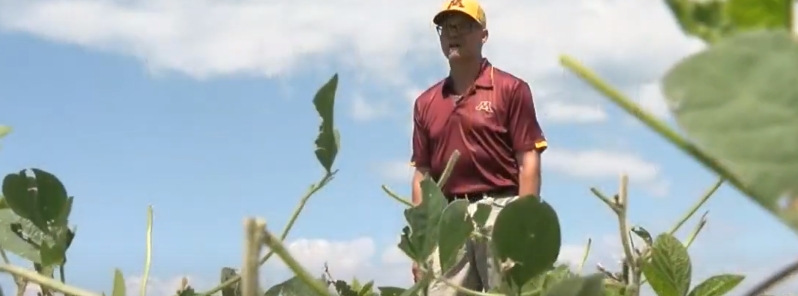Severe hailstorm causes extensive crop damage in Minnesota, U.S.

Farmers and agriculture experts are now counting the financial impacts incurred by a severe storm in Minnesota on July 11, 2020. Winds of up to 80 km/h (50 mph) and hail as big as 63.5 mm (2.5 inches) battered thousands of hectares of land in counties from Kandiyohi to Nicollet, at a time when commodity prices are already down.
"We had a wonderful crop. Best we’ve had in this area in five years," said farmer and crop consultant Curt Burns.
With an early planting season and unseasonably warm temperatures in late June and early July, corn and soybean crops were developmentally more advanced, relative to previous years.
The storm, which was up to 97 km (60 miles) long and 10 km (6 miles) wide, caused extensive damage to corn, soybeans, kidney beans, alfalfa, sweet corn, sugar beets, and pees.

Seth Naeve, a soybean agronomist, said the event is "really significant" for this time of the year, especially since commodity prices are already down.
Farmers in Renville, McLeod, and Sibley were among the worst affected, Naeve revealed, adding that while soybeans may regrow, they would not come close to the yield for which they were on pace.
"These farmers that are affected are affected individually. We really have to consider the impact on individual farmers rather than the collective whole," he stated.


"We’ve obviously had hail in the past, but I was just sick to my stomach when I got to our farms to see this total loss," said farm owner Brian Ryberg, who lost a total of 202 ha (500 acres)– about 20 percent of his crops.
"You work so hard and put all those plans together and then have this happen." He continued, "The corn, right in our worst area, there’s nothing left."
"In our case, you look in the field and there are absolutely no leaves left on the stalk. It looks like you went out there and put bamboo sticks in a row."
According to local news, the impact of the storm caused crop damage worth millions.
The University of Minnesota Extension crops educator Dave Nicolai said tallying the total damage will take some time as individual insurance adjusters need to go out to assess the damage.
"I don't know if I could categorize this as millions of dollars or something like that because there's no way to know yet at this point in time."
Nicolai added that it would be too late in the year to replant and regain any of that value, but farmers may be able to recycle the nutrients in the soil by planting a cover crop.
While crop consultants say many affected farmers may get help from insurance, it would not make them recoup all the losses.
Featured image credit: WCCO – CBS Minnesota/YouTube

Commenting rules and guidelines
We value the thoughts and opinions of our readers and welcome healthy discussions on our website. In order to maintain a respectful and positive community, we ask that all commenters follow these rules.